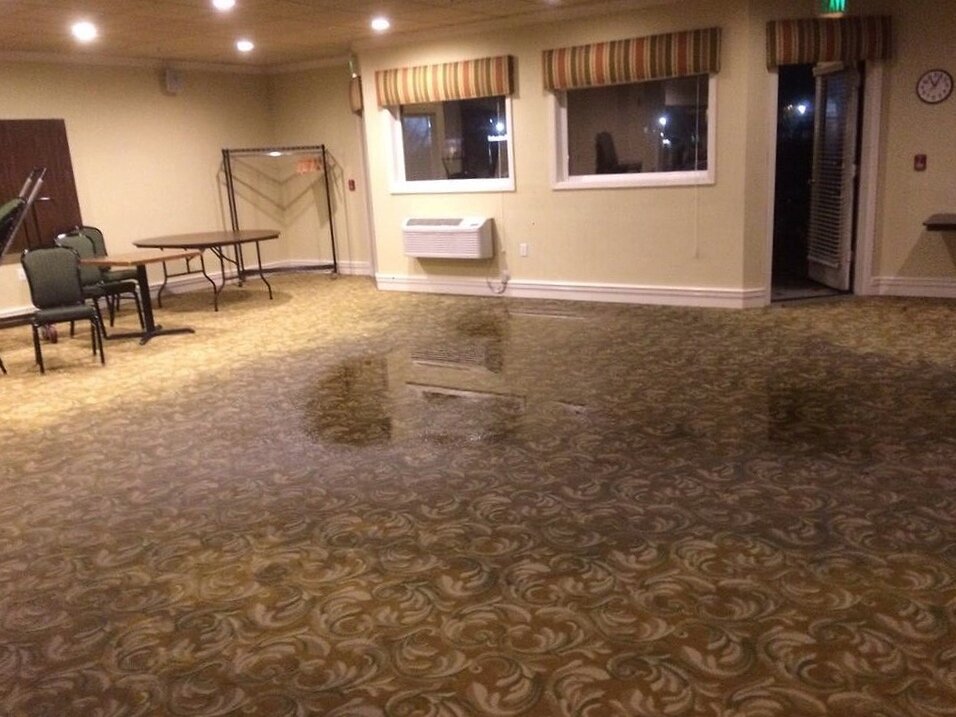Put a Stain on It!
Water? Water! Your floor is covered in water! A storm came through and it rained long and hard. Now you have a pool in your basement. Great!
Flooded basements can happen at the worst time.
Maybe you’ve had this experience before, maybe more than once. If so, you know the drill. Suck up the water, dump it somewhere. Get some fans down there to dry out the floor. Did you have carpet, wood, tile? If you don’t dry it properly it will most likely be damaged by mold and mildew. Then you have to tear it out and replace it. What a mess! What an expense!
Here’s a tip: Put a stain on it.
Concrete
Underneath all that damp flooring product is a concrete surface. “Ya, I’ve seen it,” you say. “It’s hideous. Why do you think I covered it up?” Ok, ok, so it looks bad now. It doesn’t have to remain that way. You have a sturdy surface right there. Why not refinish the concrete instead of spending money on a product that may be damaged by flooding in future?
Stained concrete floor by Ornamental Concrete
Not only can concrete withstand flooding but it is also a better option for house pets. If you have a dog that sheds a lot, carpet is the last thing you want. Carpet is just difficult to keep clean, period. It may look spotless, but we all know what’s really hiding in its fibers…or do we even have a remote idea. Yikes!
Concrete staining by Ornamental Concrete
Concrete is also a great choice for allergy free flooring because it is resistant to dust mites, mold and mildew. When finished with nontoxic colorants and sealants, it does not emit harmful volatile organic compounds (VOC’s). “In fact, VOC emissions from concrete building products are much lower than those for most other building materials,” Concrete Network, Why Concrete is a Healthy Alternative.
Stain Me Up
Have you been convinced? Good. Now what are you going to do with that concrete? There are plenty of options including painting, epoxying, or overlaying. If you want an easy and fast beautification, do a concrete stain.
Stains come in varying colors that can be mixed and manipulated to create stunning floors. There are two main kinds: acid and water-based. Acid stain penetrates the surface of the concrete and has a chemical reaction with the product. This reaction causes the floor to have varying shades of one color. Water-based stains also penetrate the concrete but there is no chemical reaction and so the color is more consistent. You can still achieve a multi-colored look by layering different water based stains on the floor.
Acid stained concrete floor by Ideal Work
Water-based stained floor. Photo Credit: Concrete Decor
If you are considering having your floor stained, speak to a professional about the pros and cons of each stain type. Based on the finish you want, they can tell you which product is best to use.

